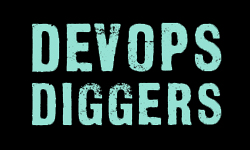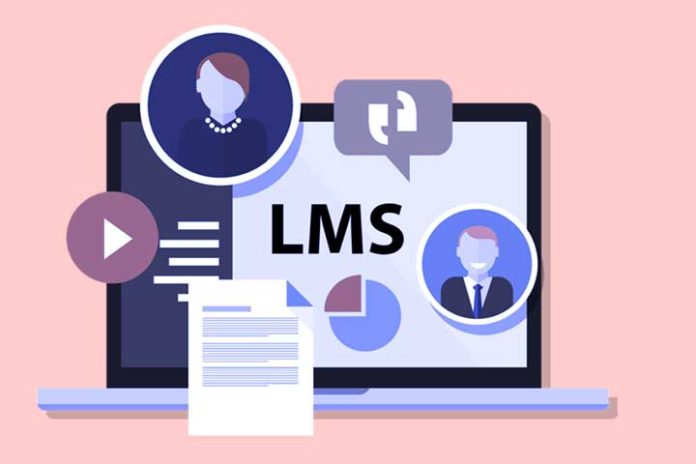The educational world, like other sectors, has also adapted to the digital environment. Digital Transformation in the education sector has been a reality for years. With the creation of e-learning platforms, education is within the reach of anyone with the Internet.
What are e-learning platforms? How are they used? What is the LMS? What are learning management systems?
First of all, let’s clarify the concepts of e-learning before starting to talk about the platforms.
When we talk about Learning Management Systems, or Learning Management System (LMS), we are referring to digital platforms that, online, allow the creation of a training system similar to a campus or school but in an e-learning format. They are called e-learning platforms.
E-learning platforms are used by all types of educational institutions, from universities to private training centres, to facilitate students’ access to their studies online.
If you are considering providing some e-learning training but need to learn how to start sharing your knowledge, we will teach you everything about the best learning platforms in 2024 in this post.
Open source or commercial e-learning platforms?
As in all cases, on the Internet, you have endless possibilities. The possibilities for managing e-learning platforms are also vast.
There are two categories: free or open-source e-learning platforms and commercial platforms; within the latter, several payment possibilities can be distinguished. We explain it to you:
Open source e-learning platforms, that is, when we say open source, we refer to software designed to be freely developed and distributed by users. They are public domain licenses to use on this type of platform.
One factor to take into account is that, although its use and distribution are free, later costs may arise for the maintenance of the platform, it may be necessary to hire qualified personnel, etc.
They stand out: Moodle, Chamilo, Sakai, or the LMS for WordPress or Canvas.
Regarding commercial e-learning platforms, depending on the payment method, we can find the following:
Pay-per-use e-learning platforms (in the cloud): Subscribers who decide on these types of platforms will pay a fee depending on the use they make of it. Payments are made, for example, taking into account the number of students, courses, etc.
Paid-per-license e-learning platforms: They are characterized by not being accessible sources and with the obligation to pay their creators for the use of licenses. Temporary contracts are established with specific benefits based on the quotas of each e-learning platform.
In this group, the leading e-learning platforms are BlackBoard, eDucativa, FirstClass, Saba, and NEO LMS.
The latest and greatest open-source e-learning platforms in 2024
1. Moodle
It is undoubtedly one of the most well-known and used e-learning platforms among open-source LMS tools. Its usefulness is recognized by the thousands of users who use it daily around the world in training centers, universities, and companies for e-learning.
Almost more than 200 million users worldwide have used Moodle, which consolidates it as one of the most famous e-learning platforms. Among its most advantageous aspects is its ease of use, with a clear and simple interface for both students and teachers.
2. Canvas LMS
It is an open-source LMS platform with a significant peculiarity that differentiates it from the rest: it works entirely in the cloud, which means it does not need to be hosted on any server.
With intuitive operation and ease of learning, you can opt for a version specially designed for the business sector, Canvas Network, or a free one for teachers; it is one of the preferred options among all the learning platforms on the market.
3. Chamilo LMS
With the ultimate goal of bringing e-learning education and training to countries that are now advancing in their development, Chamilo is present in approximately 150 countries.
Like the previous two, it is one of the e-learning platforms that is easy to understand and use. Its creators highlight the reception they have had from the training sector since its launch in 2010 by the non-profit Chamilo Association.
4. Sakai
Sakai is an LMS platform created by the collaboration of several universities based in America that launched the Sakai Project to present an open-source alternative platform to Moodle.
At this time, more than 100 universities around the world use Sakai as the preferred platform for their online and e-learning courses, including the Complutense of Madrid and the Polytechnic of Valencia.
5. WordPress LMS Platforms plugin, LearnPress
Turning your WordPress into an e-learning platform is as simple as installing a plugin and starting to use your website as an e-learning site.
Among the most used are LearnDash, Good LMS, LearnPress, etc.; the latter is one of the most recommended. Available on the WordPress website itself, it is straightforward to use, and its installation is short, which is why it is the most recommended to start with among all the learning platforms on the current market.
Also Read: E-learning Trends
Learning Management Systems which are not open source (Commercial LMS)
6. Blackboard LMS
Payment type: license fee.
The software company that created Blackboard Learn was founded in 1997. What makes it, with its years of experience, Blackboard is the most prestigious and best learning platform (commercial category, that is, not designed with open code).
Blackboard Learn is an e-learning platform used by many renowned universities. Although they also offer solutions for primary education and complementary training in companies and the public sector,
It has different types of learning platforms depending on the use: Blackboard Learn, Blackboard Collaborate, Blackboard Connect, Blackboard Mobile, and Blackboard Analytics.
7. eDucativa
Payment type: budget.
We are looking at one of the most accessible e-learning platforms to use to offer training courses over the Internet. eDucativa is used by education professionals but also by companies, universities, and specialized centers to provide e-learning resources.
With a website and the possibility of communicating with technical support in our language, many institutions have also chosen to include this platform in their training plans.
8. Rise
Payment type: payment for services.
It is an essential e-learning platform if what your company wants to guarantee is a virtual learning space. It has a drag-and-drop system, which facilitates the work of creating teleinformation courses, as well as the organization of content within the same platform.
Before paying for their services, Rise developers offer you a free option to try out the platform. Within this learning platform, the role control panel must be highlighted, especially for monitoring students, allowing you to quickly see from the same platform what learning content the students have passed.
9. Cornerstone
Payment type: not available; you must request a quote.
Specifically, Cornerstone is in demand; this is the name of this e-learning platform primarily used by professionals to learn specific subjects on the web.
It is one of the most complete LMS platforms to carry out a comprehensive student evaluation, with continuous monitoring through surveys and fully programmed controls.
10. CYPHER Learning
Payment type: pay per use.
CYPHER is an update of NEO LMS.
CYPHER Learning is a platform that has been designed to be used by all types of audiences and education professionals. It is used by students from all phases of the educational system, from primary school to university. Its easy installation, without requirements or prior knowledge, makes it very popular for training among e-learning platforms.
Google Classroom
There is an alternative to these ten learning platforms that work in the cloud; it is Google Classroom.
Unlike the rest of the learning platforms that we have seen, this one is within G Suite for Education; this platform is free and can be used by training centers, individual users who have Gmail accounts, or non-profit organizations.
There are four profiles in Classroom: teachers, students, tutors, and administrators, each with different permissions or types of functions. For example, the teacher can create and manage classes, assignments, and notes, and tutors receive a summary of the student’s work by email.
It can be used in the web version, being compatible with the main browsers, or through mobile applications for Android and iOS.
Also Read: Joinpd.com – Enter the code: Join a Lesson – Pear Deck


